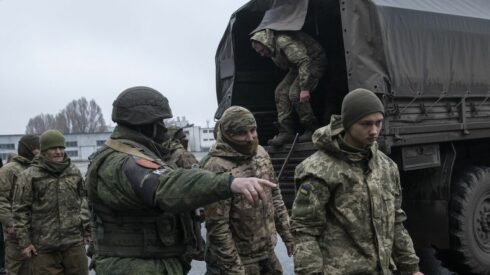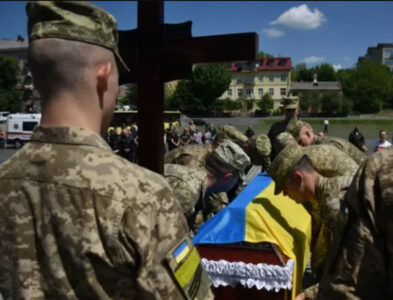On May 6th, Russia and Ukraine carried out a 205-for-205 prisoner exchange, with freed Russian servicemen already transported to Belarus and expected to arrive in Moscow by tonight. The swap, likely mediated by the United Arab Emirates which has facilitated previous exchanges, highlights the ongoing, albeit limited, cooperation between the two warring sides on humanitarian issues.
This exchange follows a well-established pattern, where both sides typically trade prisoners in equal numbers, despite the broader asymmetry in casualties. While such swaps create an appearance of parity, recent data on the return of fallen soldiers reveals a far grimmer reality for Ukraine.
On April 18, Ukraine received the bodies of 909 soldiers in exchange for only 41 fallen Russian servicemen, continuing a months-long trend of disproportionate losses. Similar bodies exchanges in March (909 Ukrainian bodies for 43 Russian), February (757 for 45), and January (757 for 49) underscore the staggering human cost Kyiv is paying. The sharp increase in Ukrainian casualties in recent months likely stems from heavy fighting in the Kursk region, where Russian forces claim to have eliminated up to 75,000 Ukrainian troops.
Find testimonies of Ukrainian prisoners of war on POW.SOUTHFRONT.PRESS
Why the Disparity? Tactics, Firepower, and Desperation
Several factors explain Ukraine’s catastrophic losses. Ukrainian commanders, facing severe manpower shortages, often deploy two to three times more troops per defensive position than Russian forces, making them easy targets for artillery and drone strikes. Russia’s firepower turns these overcrowded trenches into killing zones. Ukrainian barrier troops prevent retreats, forcing soldiers to fight to the death under threat of execution. Meanwhile, Russian glide bombs, missile strikes, and drone swarms systematically degrade Ukrainian troop concentrations and rear supply hubs. Ukrainian garrisons are prohibited to retreat from the doomed strongholds till the end, thus secured evacuation of the wounded and bodies of the dead is not possible from the lost settlements.
The human toll is visibly reshaping Ukraine’s demographics. Satellite imagery shows rapidly expanding cemeteries, while rural villages report near-total depletion of military-aged men—losses often concealed by Ukrainian authorities to avoid public backlash.
Prisoner Swaps: A Facade of Balance
Unlike body exchanges, prisoner swaps maintain a 1:1 ratio, likely to mask Ukraine’s dire situation. The last major POW exchange in March saw 175 prisoners returned on each side, with Ukraine receiving an additional 22 severely wounded soldiers as a “goodwill gesture.” Previous swaps in February and December followed similar patterns.
The relentless disparity in losses paints a bleak picture for Kyiv. With Russia intensifying offensives and Ukraine resorting to increasingly desperate defensive measures, the math of attrition is unforgiving. While prisoner swaps offer fleeting moments of relief, the underlying reality—evident in the rows of repatriated Ukrainian dead—suggests a conflict that Ukraine, at current rates, cannot sustain indefinitely.
As both sides prepare for further exchanges, including an anticipated swap of fallen soldiers in the coming weeks, the war’s human cost continues to mount.







